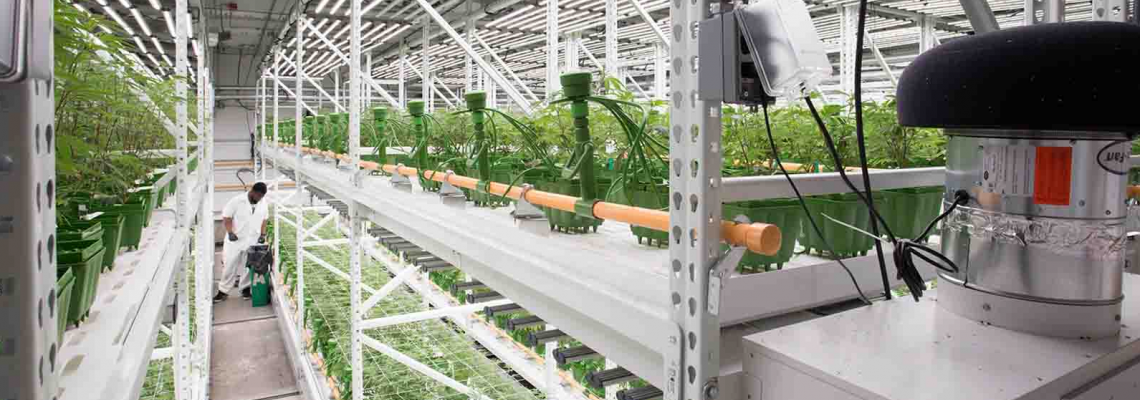
Indoor farming and greenhouse cultivation are revolutionizing modern agriculture, offering greater control over growing conditions and enabling year-round crop production. At the core of this evolution lies LED lighting technology, which plays a crucial role in plant development across every stage—from seedling to harvest. Unlike traditional lighting systems, LEDs provide customizable light spectrums and intensities that can be fine-tuned to meet the specific needs of each plant and growth phase. However, not all plants respond to light in the same way, and different stages of growth—such as germination, vegetative development, and flowering—require different lighting strategies. By adjusting the spectrum, intensity, and duration of light exposure, growers can significantly influence plant health, yield quality, and overall efficiency. Understanding how to optimize LED light settings throughout the plant lifecycle is essential for achieving consistent results, minimizing energy costs, and promoting sustainable farming practices. Whether you're a commercial greenhouse operator or a hobby grower, mastering these lighting techniques can make a measurable difference in your harvest.
In this blog, we’ll guide you through the best LED light settings for each stage of plant growth, helping you unlock your crop’s full potential and grow smarter with every cycle.
Why LED Light Settings Matter
LED grow lights offer flexibility, energy efficiency, and spectrum control—something older technologies like HPS and fluorescent lights can’t match. Plants rely on specific wavelengths for photosynthesis and development. By tailoring LED light settings for each growth stage, you can:
Boost photosynthetic efficiency
Encourage strong root and leaf development
Improve flowering and fruiting
Save energy by minimizing light waste
Let’s break down the best lighting strategies for each major phase of plant growth.
1. Seedling Stage (Days 0–14)
Goal: Establish roots and prevent stretching
Recommended Spectrum: Primarily blue light (400–500 nm)
Light Intensity: 100–300 PPFD (µmol/m²/s)
Photoperiod: 16–18 hours of light per day
At the seedling stage, plants are extremely delicate. Blue light promotes compact, sturdy growth and healthy root development while reducing the risk of leggy seedlings. Avoid strong red light, which may lead to stretching.
Pro Tip: Keep lights 12–24 inches above the canopy and use dimmable fixtures to prevent heat stress.
2. Vegetative Stage (Weeks 2–6)
Goal: Encourage leafy growth and build plant structure
Recommended Spectrum: Higher blue light with some red (70% blue, 30% red)
Light Intensity: 300–600 PPFD
Photoperiod: 16–20 hours of light per day
This is when your plants bulk up. They need more light intensity to support rapid foliage growth. Blue light continues to play a key role here, but introducing some red light supports energy absorption and photosynthesis.
Pro Tip: Adjust light height and intensity weekly to keep up with plant growth and avoid hotspots.
3. Pre-Flowering Stage (Week 6 onward, varies by crop)
Goal: Transition from vegetative growth to reproductive phase
Recommended Spectrum: Balanced spectrum (50% blue, 50% red)
Light Intensity: 600–900 PPFD
Photoperiod: 12–14 hours of light per day (for photoperiod-sensitive plants)
As your plant prepares to flower or fruit, you need to start modifying both spectrum and timing. A balanced spectrum with red and blue light supports the hormonal shift that triggers flowering.
Pro Tip: Gradually reduce light hours to simulate seasonal changes—this mimics nature and helps trigger blooming.
4. Flowering/Fruiting Stage (Varies by species)
Goal: Maximize bud, flower, or fruit production
Recommended Spectrum: Dominantly red with far-red and supplemental blue (70% red, 20% far-red, 10% blue)
Light Intensity: 800–1,200 PPFD
Photoperiod: 10–12 hours of light per day (if photoperiod-sensitive)
Red and far-red light stimulates flowering hormones, encouraging fruiting and bud formation. Blue light is still necessary but at lower levels. Plants also require greater intensity to support energy-intensive processes like fruit production.
Pro Tip: Use LED fixtures that support spectrum tuning or dual-channel controls to fine-tune your lighting setup based on real-time plant responses.
5. Harvest and Post-Harvest Considerations
While not a growth stage, lighting still plays a role just before harvest. Many growers reduce light intensity and shift the spectrum slightly to boost flavor, aroma, or resin content (in crops like herbs or cannabis).
Pro Tip: Some growers opt for increased UV-A light just before harvest, which can increase terpene and cannabinoid content in certain crops.
Additional Tips for LED Lighting Success
Use full-spectrum LEDs: These simulate natural sunlight and simplify spectrum management.
Measure with PAR meters: Photosynthetically Active Radiation (PAR) meters help you measure real light intensity at the canopy level.
Automate when possible: Timers, smart controllers, and sensors can ensure plants receive consistent light at all times.
Watch your plants: Leaf curling, discoloration, or stretching are signs your lighting needs adjustment.
Choosing the Right LED Grow Lights
Not all LEDs are created equal. Look for fixtures that offer:
Adjustable spectrum settings
Dimmable output
High photosynthetic efficiency (PPE > 2.0 µmol/J)
Long lifespan (50,000+ hours)
Low heat output
Some advanced models include sensors, wireless controls, and data logging features—ideal for commercial growers or serious home cultivators.
Conclusion
Lighting plays a vital role in the success of indoor farming. Using the correct LED light settings at each stage of plant growth—from seedling to harvest—can lead to healthier plants, improved yields, and higher crop quality. LEDs offer precise control over light spectrum, intensity, and duration, enabling growers to tailor lighting to the specific needs of their crops. This not only boosts productivity but also reduces energy consumption, making LED lighting a smart, sustainable solution for modern agriculture. With their efficiency and flexibility, LEDs have become the preferred choice for growers aiming for consistent, high-quality results year-round.
Ready to upgrade your grow setup?
Explore our advanced full-spectrum and smart LED grow lights designed for every stage of plant development.

Leave a Comment